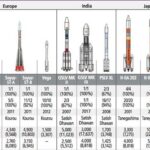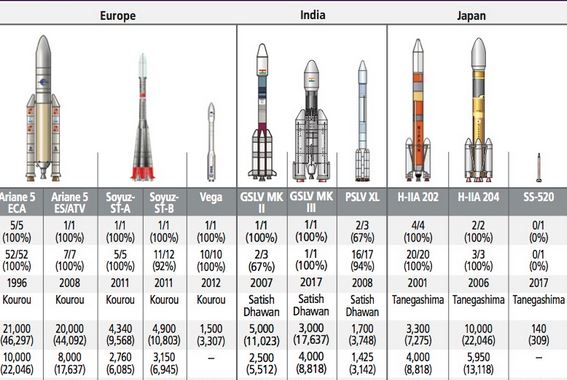Orbital Payload Launch
Japanese Payload Launches
2017 – Japan Payload Launch – Snapshot


Japanese orbital launch attempts set a new launch record for the nation in 2017. Japan attempted seven SLV launches, growing the nation’s global orbital launch activity share from…
2016 – Japan Payload Launch – Snapshot
Japan’s share of the 2016 global orbital launch market stayed around ##%, equaling the country’s ##. ## of Japan’s ## orbital launch attempts were ##, giving the country a ##% reliability record for 2016…
2015 – Japan Launch, Payload
Japan’s number of SLVs launched during 2015 equaled their 2014 efforts. The country’s 2015 share of global orbital space launches grew, but only because the total number of SLVs launched globally during 2015 declined. The four SLVs launched during 2015 from Japan helped the nation to maintain a share of nearly 5% of global launches.
2014 – Japan Launch, Payload
Japan successfully conducted ## orbital launches in 2014, placing a variety of payloads into orbit for domestic customers. Japan’s launch rate continues its climb from a low of ## in 2012 and ## in 2013. For all of the launches in 2014, Japan’s vehicle of choice was the H-IIA, launching out of Tanegashima Space Center in Japan.
2013 – Japan Launch, Payload
Japan successfully conducted ## orbital launches in 2013, placing a variety of payloads into orbit for domestic customers. In 2013, Japan also signaled that it intends to compete in the global commercial market.
2012 – Japan Launch, Payload
Japan successfully conducted ## orbital launches in 2012. There are seven total HTV missions planned, launching roughly every year until 2016, after which the future of the HTV has yet to be decided.
2011 – Japan Launch Efforts – Snapshot
The Japanese space program continued operations at its usual pace with ## launches in 2011. The first launch occurred in January and sent the second H-II Transfer Vehicle (HTV) to its rendezvous and docking with the ISS. Much like the European ATV, the HTV is an uncrewed cargo vehicle designed to dock with the ISS and transfer dry cargo, fuel, and water to the station, before being loaded with the station’s garbage and sent back to Earth to burn up in the atmosphere.
2010 – Japan’s Launch Efforts – Snapshot
Japan conducted ## successful launches of its H-IIA rocket, compared with ## launches in 2009. The Japanese space program was also able to end a launch window restriction at its Tanegashima launch facility, which had limited launches for much of the year.
2009 – Japan Launch and Payload – Snapshot
In contrast to countries that fill various space-launch niches with an array of different rocket types, Japan has chosen to focus its rocket development efforts by progressively enhancing and refining older rockets. The H-IIA and H-IIB are the current manifestations of these efforts.
2008 – Japan Launch, Payload
Japan, after conducting a high of ## orbital launches in 2006, performed ## orbital ## in 2008. Japan is developing an enhanced version of its H-II vehicle, the H-IIB, designed to carry the cargo-supply H-II Transfer Vehicle (HTV) as a payload to the ISS. The HTV is scheduled for launch in September 2009 and is to be the largest payload the Japan Aerospace Exploration Agency (JAXA) has ever deployed.